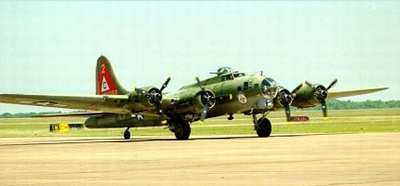Fri, Aug 31, 2012
First Lt. Harry Eck Was Aboard A B-17G That Went Down Over Germany
The remains of a U.S. serviceman, missing in action from World War II, have been identified and returned to his family for burial with full military honors, according to the Department of Defense POW/Missing Personnel Office (DPMO).

On Sept. 13, 1944, Army Air Forces 1st Lt. Harry W. Eck, of Minot Ward, ND, and and eight other crew members were on a B-17G Flying Fortress that crashed near Neustaedt-on-the- Werra, Germany. Only one of the crewmen is known to have successfully parachuted out of the aircraft before in crashed. The remaining eight crewmen were buried by German forces in a cemetery in Neustaedt. Following the war, U.S. Army Graves Registration personnel attempted to recover the remains of the eight men, but were only able to move the remains of one man to a U.S. military cemetery in Holland. In 1953, with access to eastern Germany restricted by the Soviet Union, the remains of the seven unaccounted for crewmen were declared Non-Recoverable.
In 1991, a German national who was digging a grave in the cemetery in Neustaedt, discovered a metal U.S. military identification tag and notified officials. Due to German burial law, Joint POW/MIA Accounting Command (JPAC) wasn’t granted access to the site until 2007 and excavated the location in 2008. The team recovered human remains and additional metal identification tags from three of the crewmembers.
To identify Eck’s remains, scientists from the JPAC used forensic identification tools and circumstantial evidence, including dental comparisons. Additionally, the Armed Forces DNA Identification Laboratory used mitochondrial DNA— which matched that of Eck’s cousin — in the identification of his remains.
Of the 16 million Americans who served in World War II, more than 400,000 died. At the end of the war, the U.S. government was unable to recover and identify approximately 79,000 Americans. Today, more than 73,000 are unaccounted for from the conflict.
(B-17G image from file)
More News
Aero Linx: Model Aeronautical Association of Australia MAAA clubs are about fun flying, camaraderie and community. For over 75 years, the MAAA has been Australia’s largest fl>[...]
Touchdown Zone Lighting Two rows of transverse light bars located symmetrically about the runway centerline normally at 100 foot intervals. The basic system extends 3,000 feet alon>[...]
“Discovery and innovation are central to our mission at Virgin Galactic. We’re excited to build on our successful record of facilitating scientific experiments in subor>[...]
How To Get A Story On Aero-TV News/Feature Programming How do I submit a story idea or lead to Aero-TV? If you would like to submit a story idea or lead, please contact Jim Campbel>[...]
Student Pilot Reported That During Rotation, “All Of A Sudden The Back Of The Plane Kicked To The Right..." Analysis: The student pilot reported that during rotation, “>[...]
 ANN's Daily Aero-Linx (05.02.24)
ANN's Daily Aero-Linx (05.02.24) ANN's Daily Aero-Term (05.02.24): Touchdown Zone Lighting
ANN's Daily Aero-Term (05.02.24): Touchdown Zone Lighting Aero-News: Quote of the Day (05.02.24)
Aero-News: Quote of the Day (05.02.24) ANN FAQ: Contributing To Aero-TV
ANN FAQ: Contributing To Aero-TV NTSB Final Report: Cirrus Design Corp SR20
NTSB Final Report: Cirrus Design Corp SR20



